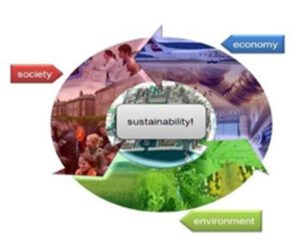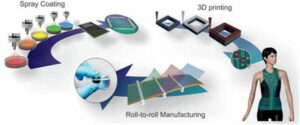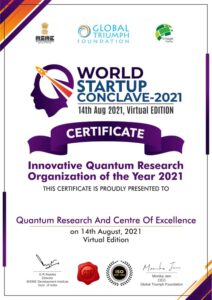Aspire Accelerator for Graphene Industry 1.0 : In a startup, absolutely nothing happens unless you make it happen. Breakthrough ideas look crazy.
Newswave @ New Delhi
Graphene, a Carbon nano-material with honeycomb lattice was first isolated in 2004 by Andre Geim and Konstantin Novoselov at the University of Manchester. It is quite the material. An ultra-fine nano-material with innumerable astonishing properties, hailed as semimetal; capable of disrupting the fields of electronics, energy, and others, it looked more promising than almost anything we had ever come across. But it was left in the midway. What happened to it?
GRAPHENE The Wonder MATERIAL :

When Andre Geim and Konstantin Novoselov first isolated graphene, it was hailed as an extraordinary material. And it’s an appropriate compliment. The two went on to win the Nobel Prize in Physics in 2010, for their “ground-breaking experiments regarding the two-dimensional material graphene.”
As reported by Tech Radar, Frank Koppens, from the Institute of Photonic Sciences in Barcelona, spoke about what makes graphene so special. “It’s very versatile, and what’s very special about it is its electronic properties – there is no other material that is so conductive.

“It also has lots of other properties that are crucial – it’s flexible and easy to integrate it into micro-electronics, and as a raw material, it’s cheap. It’s just made out of carbon,” he continued. It is not only the strongest material ever tested (about 200 times stronger than steel), but it also conducts head and electricity efficiently (more conductive than copper), as well as being nearly transparent.
But if it’s so good, and so cheap, why was it not in use until now? The reason lies in its harvesting technique. Well, turns out it’s not that easy to harvest graphene. According to The Engineer, to harvest graphene, you use sound energy or shearing forces “to exfoliate graphene layers from graphite, and then dispersing the layers in large amounts of organic solvent.”
Though it sounds simple, the main problem is that if you don’t use enough solvent, the graphene layers reattach themselves back into graphite. That means that, right now, you need one ton of organic solvent for every kilogram of graphene yielded. Meaning it’s hardly an efficient, or environmentally-friendly, method. But there is hope.
There are reports findings of a new technique developed by a team of researchers at the National University of Singapore (NUS), who claim it requires 50 times less solvent for the same effects. The new method works by exfoliating pre-treated graphite under highly alkaline conditions, which makes the graphene layers cluster together without needing to increase the solvent’s volume. It also results in repulsive forces between the graphene layers, which means they don’t reattach later on.
According to Professor Loh Kian Ping from the NUS Faculty of Science, this technique is “an attractive solution for industries to carry out large scale synthesis of this promising material in a cost-effective and sustainable manner.”

Dr. Kumar Gautam (Founder and President of QRACE) and Dr Indu Tripathi (Research Director of Nanotechnology & Energy Department-QRACE), haveworked in various areas, which are addressing issues concerning national priorities that include fundamental science, technology development, human and scientific infrastructural resource generation. The Business model of quantum technologies is expected to be one of the major technology disruptions that will change the entire paradigm of computation, communication, Societal Development and so on. It is perceived that the countries who achieve an edge in this emerging field will have a greater advantage in garnering multifold economic growth and dominant leader- ship role.
Some of the most relevant reason for rise of graphene talk are maybe the number of patents for, and research papers on, graphene, which has been steadily increasing over the past decade.For example, research papers on graphene have multiplied by more than five times, growing to almost 20,000 in 2017, from about 5,000 in 2010.
The market for graphene itself is also growing. In 2016, the global graphene market was estimated to sit at $32 million US dollars, while by 2022 it is predicted to surpass the mark of $200 million US dollars.
 News Wave Waves of News
News Wave Waves of News








